You might not realize that effective African heritage management can greatly enhance community resilience and identity. By implementing best practices, you can help guarantee that local traditions and histories are not only preserved but also actively integrated into modern development. From fostering community engagement to leveraging sustainable funding models, there's a strategic approach that can make a difference. Curious about how these practices can reshape the future of cultural preservation?
Key Takeaways
- Engage local communities actively in heritage conservation to foster ownership and pride in cultural practices, enhancing their participation in initiatives.
- Implement innovative training programs that develop skills in guiding and site management, ensuring sustainable practices for future generations.
- Develop legal frameworks that respect local heritage and promote inclusivity, supported by public awareness campaigns about heritage laws and rights.
- Secure diverse funding sources through government grants and public-private partnerships to ensure financial stability for heritage initiatives.
- Conduct holistic assessments that integrate cultural heritage into resource management, promoting collaboration among communities, governments, and NGOs for sustainable practices.
Community Involvement Strategies
Involving local communities in heritage management isn't just beneficial; it's essential for successful conservation efforts. Engaging local communities guarantees that heritage conservation aligns with their values, traditions, and knowledge.
For instance, when local school students in Slovenia participate in conservation projects, they not only learn about their cultural heritage but also develop a sense of responsibility toward it. Similarly, in Peru, training residents as tour guides creates economic opportunities tied to heritage tourism, deepening their connection to the sites they represent.
The World Heritage Committee's recognition of best practices highlights the importance of these community involvement strategies. Successful heritage management often thrives on stakeholder collaboration, where governments, NGOs, and local communities work hand-in-hand.
This collaborative approach fosters a shared sense of ownership, reinforcing the idea that conservation isn't just a top-down initiative but a community-driven effort.
Capacity Building Initiatives
In capacity building initiatives, you'll find that innovative training programs play a pivotal role in enhancing community involvement strategies.
By equipping local inhabitants with skills, such as guiding and site management, these programs foster a sense of ownership and responsibility toward heritage conservation.
Collaborating with local communities not only strengthens management capabilities but also guarantees that conservation efforts are sustainable and culturally relevant.
Community Involvement Strategies
Effective community involvement strategies are vital for successful heritage management, as they empower local populations to take an active role in preserving their cultural assets. When you engage diverse audiences in capacity building initiatives, as emphasized by the World Heritage Committee, you enhance not only the management capacities of heritage sites but also foster a sense of belonging among the community.
Take inspiration from initiatives like training local inhabitants as tour guides in Peru, which boosts local economic growth and deepens heritage appreciation. The Historic Town of Vigan exemplifies how integrating local participation leads to innovative and sustainable heritage conservation practices.
Furthermore, involving youth, like students in Slovenia, in capacity building efforts cultivates a sense of ownership toward cultural heritage, guaranteeing future generations remain invested.
Integrating indigenous heritage management systems with modern practices is essential, as it prevents alienation and neglect of heritage sites. By actively involving the community in these strategies, you create a collaborative atmosphere that not only preserves cultural assets but also nurtures pride and responsibility.
Ultimately, effective community involvement in heritage management guarantees that these treasured sites thrive for years to come.
Innovative Training Programs
Building on the foundation of community involvement strategies, innovative training programs play a pivotal role in enhancing heritage management across Africa. These programs focus on capacity building, empowering local communities to take an active role in preserving their cultural heritage.
For instance, training local inhabitants as tour guides not only promotes economic growth but also fosters cultural exchange, as seen in successful initiatives worldwide.
The African World Heritage Regional Youth Forum on Robben Island exemplifies this approach, equipping youth with the essential knowledge and skills for sustainable heritage management. Such initiatives cultivate a sense of belonging and responsibility among participants, ensuring that heritage isn't only preserved but celebrated.
Moreover, capacity building initiatives emphasize the use of modern communication tools and resource materials developed since 2011, enhancing management capacities for World Heritage conservation.
Best practices show that engaging youth, like involving local school students in Slovenia, greatly boosts educational outreach and community participation.
Collaborative partnerships with international organizations further enrich these training programs, facilitating knowledge exchange and developing targeted educational resources.
Legal Framework Development
Developing a robust legal framework for heritage management in Africa requires a nuanced understanding of both historical context and contemporary needs. Many African nations still grapple with colonial legacies that hinder effective integration of local practices. The National Heritage Resources Act (NHRA) in South Africa serves as a model, recognizing both tangible and intangible cultural values while promoting broader planning initiatives.
To enhance legal frameworks, collaboration is key. Governments must work alongside local communities to respect and incorporate their knowledge into heritage management decisions. This partnership can lead to more effective protections for heritage sites.
Here's a concise overview of essential elements in legal framework development:
| Element | Importance | Example |
|---|---|---|
| Historical Context | Understand colonial influences | Review existing colonial laws |
| Local Community Engagement | Foster inclusivity and respect | Involve local leaders in planning |
| International Collaboration | Share best practices and resources | Partner with global heritage bodies |
| Public Awareness | Increase knowledge of heritage laws | Implement educational campaigns |
Sustainable Funding Models
Incorporating local community insights within legal frameworks sets the stage for exploring sustainable funding models in heritage management.
By embracing innovative strategies, you can guarantee that conservation projects thrive through diverse funding avenues. Here are four sustainable funding models to take into account:
- Public-Private Partnerships: Collaborate with private entities to pool resources, sharing risks and rewards while enhancing financial stability for your heritage initiatives.
- Community Fundraising: Engage local communities to mobilize resources through creative fundraising efforts. This fosters a sense of ownership and belonging among residents.
- Government Grants and Incentives: Leverage available grants to secure essential funding for conservation projects. These financial supports often catalyze other funding sources.
- Endowment Funds: Establish endowment funds, like the African World Heritage Fund, to provide ongoing financial backing for endangered sites, guaranteeing long-term sustainability.
Indigenous Knowledge Integration
Indigenous knowledge integration plays a pivotal role in enhancing heritage management strategies by fostering local community involvement. By valuing traditional ecological practices, you not only protect landscapes but also promote cultural heritage sustainability. For instance, indigenous fire management techniques effectively preserve both tangible and intangible aspects of heritage, creating a stronger community bond.
| Indigenous Knowledge Integration | Impact on Heritage Management |
|---|---|
| Traditional Ecological Knowledge | Enhances landscape preservation |
| Community-led Craft Revitalization | Fosters cultural identity and economy |
| Indigenous Governance Recognition | Mitigates conflicts, promotes sustainability |
| Local Languages in Conservation | Strengthens community ties |
| Oral Histories Transmission | safeguards cultural narratives for future generations |
Incorporating indigenous knowledge isn't just about preserving the past; it's about embracing the future. Projects in countries like Mali and Ghana exemplify how community involvement can revitalize cultural practices, leading to economic growth. By recognizing and respecting local governance systems, heritage management can become more inclusive and effective, guaranteeing that the voices of those who truly belong to these cultures are heard and valued.
Holistic Environmental Assessments
When you conduct Holistic Environmental Assessments (HEAs), you're not just evaluating environmental impacts; you're integrating cultural heritage into the broader scope of sustainable resource management.
By collaborating with specialists from both fields, you enhance your impact evaluations and guarantee that heritage resources are safeguarded amid development.
This all-encompassing approach not only promotes conservation but also fosters a deeper understanding of the interdependencies between the environment and cultural significance.
Integrated Impact Evaluations
Integrated impact evaluations serve as a critical nexus between development projects and cultural heritage preservation, allowing for a thorough examination of how proposed changes can affect both environmental and cultural resources.
By integrating these evaluations into the planning process, you can guarantee that heritage resources are protected while still pursuing conservation and sustainable development.
Here are four key benefits of conducting integrated impact evaluations:
- Comprehensive Analysis: They assess both environmental and cultural impacts simultaneously, providing a fuller understanding of potential consequences.
- Proactive Mitigation: Early identification of risks allows for the implementation of measures to minimize negative effects on heritage resources.
- Enhanced Collaboration: Working together with environmental specialists and heritage professionals fosters a shared understanding of interconnectedness.
- Community Engagement: Effective evaluations support community participation, making certain that local voices are heard in heritage management decisions.
Sustainable Resource Management
Building on the insights gained from integrated impact evaluations, sustainable resource management through holistic environmental assessments plays a crucial role in preserving cultural heritage while addressing environmental concerns.
These assessments are fundamental for identifying potential impacts on cultural heritage resources during development projects, as mandated by the National Heritage Resources Act (NHRA) in South Africa.
Collaboration between environmental scientists and heritage specialists is significant in this process. By working together, they guarantee the conservation and management of cultural sites while considering ecological factors.
Effective assessments also prioritize stakeholder engagement, incorporating local communities' traditional knowledge and practices into the conservation process.
Moreover, implementing environmental impact assessments that include cultural heritage considerations can mitigate adverse effects and raise awareness of the interconnections between heritage and the environment.
By integrating cultural sites into broader environmental planning, holistic assessments support the sustainable development of heritage areas.
This approach not only safeguards these invaluable resources for future generations but also fosters a sense of belonging and responsibility within communities.
Emphasizing sustainable resource management is crucial for achieving a harmonious balance between cultural heritage preservation and environmental stewardship.
Cultural Heritage Awareness Programs
Cultural heritage awareness programs play an essential role in educating local communities about the importance of their unique histories and traditions. These initiatives foster a sense of pride and ownership, encouraging active participation in heritage conservation efforts.
Here are some key aspects that make these programs effective:
- Community Workshops: Engaging local participants in interactive settings helps them connect with their cultural heritage and understand its significance.
- Youth Engagement: Programs like the African World Heritage Regional Youth Forum empower young people to advocate for their cultural resources and become future leaders in conservation.
- School-Based Curricula: Integrating local history into educational systems enables students to form a strong cultural identity and appreciation for their heritage.
- Collaborative Campaigns: Partnerships between government, NGOs, and communities raise awareness about threats to cultural heritage, such as urbanization and climate change.
Collaboration With Local Stakeholders
To effectively manage heritage in Africa, you need to prioritize community engagement strategies that foster collaboration with local stakeholders.
Partnering with NGOs can amplify these efforts, providing resources and expertise that enhance participation and sustainability.
Community Engagement Strategies
Effective community engagement in heritage management fosters a profound sense of ownership among local populations, which is fundamental for the long-term preservation of cultural resources.
When communities actively participate, they not only protect their cultural and natural heritage but also enhance conservation outcomes.
Here are some effective strategies you can implement:
- Training Programs: Empower locals by training them as tour guides. This initiative promotes sustainable tourism while giving communities a stake in their heritage.
- Youth Involvement: Engage school students in heritage site management. Educational programs can instill a sense of duty and appreciation for cultural preservation from an early age.
- Community Voice: Integrate local perspectives in management practices. The recognition of sites like the Historic Town of Vigan shows how significant community input is for successful heritage conservation.
- Collaborative Resources: Foster collaboration between governments, NGOs, and local communities. This partnership is essential for mobilizing resources and ensuring the sustainable development of heritage sites, as emphasized in the AU Agenda 2063.
Partnership With NGOS
Often, successful heritage management hinges on robust partnerships with NGOs and local stakeholders. By collaborating with NGOs, you can tap into their expertise, resources, and networks, all essential for implementing sustainable conservation practices across Africa.
Local community members, including indigenous groups, play a crucial role in this process, offering invaluable traditional knowledge and fostering ownership over cultural preservation.
These partnerships have led to community-led heritage initiatives, such as eco-tourism projects that not only bolster conservation efforts but also stimulate local economies. When you work together with NGOs, you create a space for capacity building, where training and educational resources empower community members to manage and protect their heritage sites effectively.
Moreover, collaborative efforts involving governments, NGOs, and local communities embody best practices in heritage management. They promote inclusivity, ensuring diverse cultural perspectives shape management strategies.
Preservation of Intangible Heritage
Preserving intangible heritage requires a concerted effort from communities, governments, and organizations to recognize and celebrate the cultural expressions that define identities.
Intangible cultural heritage, such as traditions, languages, and performing arts, plays a crucial role in fostering social cohesion and cultural diversity.
Here are some effective strategies to guarantee its preservation:
- Community-Led Initiatives: Encourage local communities to actively participate in reviving and maintaining traditional practices, like the Wodaabe's Gerewol festival, which celebrates cultural identity.
- Integration into Educational Curricula: Collaborate with educational institutions to weave intangible heritage into curricula, fostering pride and awareness among youth about their cultural roots.
- Utilization of Digital Media: Adopt innovative approaches to document and share oral histories and traditional knowledge, making them more accessible to younger audiences.
- Collaborative Partnerships: Strengthen connections between local communities, governments, and NGOs to create a supportive framework for safeguarding intangible heritage.
Effective Management Policies
The preservation of intangible heritage naturally leads to the need for robust management policies that engage local communities in the process. Effective heritage management relies on integrating local knowledge and practices, ensuring that community involvement is a cornerstone of conservation efforts.
Take, for instance, the National Heritage Resources Act (NHRA) in South Africa, which exemplifies a framework focused on public participation and collaborative governance.
Successful site management practices develop clear, thorough plans that respect both tangible and intangible heritage, as seen in various World Heritage sites across Africa. Innovative policies, like community-based tourism initiatives, empower local populations economically while promoting sustainable conservation.
The Robben Island Museum is a prime example of how heritage can foster community engagement and economic opportunity.
Moreover, organizations like the African World Heritage Fund (AWHF) enhance capacity building and resource allocation, underscoring the role of financial support in effective policy implementation.
Frequently Asked Questions
What Are the Key Components of an Heritage Management Plan?
A heritage management plan should include community engagement, ensuring locals feel involved in decision-making.
You'll want to incorporate sustainable tourism practices that benefit both the environment and the economy while preserving cultural significance.
Educational programs play a vital role in raising awareness about heritage values and fostering pride among community members.
What Are the 4 Main Aspects of Cultural Heritage?
Did you know that over 80% of the world's heritage sites are threatened by climate change?
Understanding the four main aspects of cultural heritage—tangible, intangible, natural, and digital—is essential for cultural significance. Each aspect fosters community engagement and promotes heritage education.
What Has UNESCO Done for Africa?
UNESCO's initiatives in Africa have focused on cultural preservation, empowering communities to safeguard their heritage.
You'll notice how UNESCO supports local involvement, ensuring that people play essential roles in protecting their cultural assets.
They've also established legal frameworks and provided training for heritage professionals, enhancing collaboration across nations.
What Are the Challenges Facing Preservation of Cultural Heritage in Kenya?
You'll find that preserving Kenya's rich cultural tapestry faces a few bumps in the road.
Community engagement often takes a backseat, leaving local voices unheard. Economic sustainability struggles to gain traction, with funding for heritage sites falling short of what's needed.
Additionally, policy development lags behind, creating gaps in protection measures.
Together, we can navigate these challenges, fostering a collaborative approach that nurtures Kenya's heritage for future generations to cherish.
Conclusion
To summarize, embracing these best practices in African heritage management can transform how communities connect with their cultural identity. By prioritizing community involvement, enhancing capacity building, and developing inclusive legal frameworks, you not only guarantee preservation but also foster sustainable growth. By integrating indigenous knowledge and collaborating with stakeholders, you create a holistic approach that honors the past while paving the way for the future. Together, let's commit to protecting Africa's rich heritage for generations to come.








